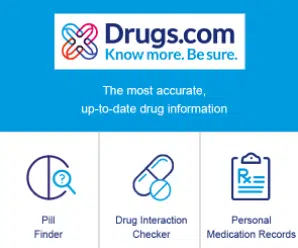Healthcare marketers strategically leverage survey ads to gauge customer sentiment, boost brand awareness, and gather first-party data to refine advertising campaigns. The direct feedback obtained through surveys allows marketers to understand better how their advertising efforts are resonating with audiences, providing invaluable insights into target demographics and facilitating easier categorization. By utilizing survey ads, healthcare marketers enhance brand awareness and foster meaningful connections with their audience, making it a compelling approach for optimizing marketing strategies.
In this article, we’ll explore how survey ads work, when to use them in healthcare marketing, and highlight prime healthcare ad survey examples your brand can emulate.
Key Takeaways
- Survey ads are a marketing research tool to collect opinions, information, and feedback on certain products, services, or topics. They’re also referred to as brand lift or discovery surveys.
- Different types of survey ads, including interactive and brand lift survey ads, can be used for different marketing goals.
- Survey ads can be run on various platforms and channels, including social media, email newsletters, branded websites, and marketing research platforms.
What Are Survey Ads?
Survey ads (a.k.a. discovery ads or brand lift* ads) are a marketing research tool used to collect opinions, information, and feedback on certain products, services, or subjects. For example, healthcare professionals may see a display ad from a pharmaceutical company asking if they have prescribed or are likely to prescribe a specific medication. When an HCP participates, that direct feedback will help the company gather better insight into marketing that prescription and engage with HCPs. By surveying customers, brands can gain further insight into customer awareness regarding specific products and services, brand perception, and behaviors1. In turn, marketers can recalibrate campaign strategies based on that feedback.
*“Brand lifts” refer to measuring how a brand’s ads positively affect customer perception and engagement with that brand, such as new followers or new customers, or increased brand favorability2.
Sample Questions Survey Ads Can Ask Consumers
Depending on which metrics the survey ad needs to measure, there are many questions advertisers can employ to get insightful feedback.
For Ad Recall
- Do you remember this ad?
- Did the ad capture your attention?
- Can you recall the main message or slogan from the ad?
- On a scale of 1 to 10, how likely are you to remember this ad in the future?
- Did the ad leave a positive or negative impression on you?
For Conversion
- Will you buy this service?
- Are you considering buying this service?
- What is stopping you from buying?
- Did you visit the website or store after seeing the ad?
- On a scale of 1 to 5, how likely are you to convert in the next 30 days?
For Brand Awareness
- Which of the following brands/products do you recollect?
- Which elements of the ad helped you recognize the brand/product?
- Can you name any competitors’ brands/products you recall from the ad?
- Which specific attributes of the brand/product appeal to you the most?
- Would you prefer this brand over others in the same category if given a choice?
Types of Survey Ads
Interactive Survey Ads
Interactive survey ads are display ads that offer clickable elements for audiences in the form of quizzes, questionnaires, or sliders to engage with audiences and collect first-party ad data at scale during ad campaigns. Interactive ads are easily accessible and quick for consumers to participate, allowing marketers to gather real-time consumer insights to produce brand intelligence.* Interactive ads deliver twice the click-through rate of static ads and a 35% increase in brand interaction.3 Marketers can then use unique first-party data better to understand consumers’ intent, interests, triggers, and more to drive ad optimization.
There are four types of interactive survey ads:
- Market Research Ad: This is a traditional brand lift survey with a multiple-choice question.
- One-Question Survey: Provides a concise promotional inquiry designed to swiftly gather specific feedback or preferences from the audience by presenting a single targeted question.
- Connected Multi-Question Ad: Also called “story ads,” these ads have an interactive format that sequentially presents a series of related questions to the audience.
- Enhanced Banner: Combine a banner’s visual appeal with interactive survey features, offering users an engaging and immersive experience to provide feedback or insights.
*Brand intelligence4 refers to the collective data that points to how a brand is perceived by the public, including metrics such as brand awareness, recall, online feedback, and more.
Brand Awareness Ad Recall Lift Surveys
Healthcare advertisers use brand lift surveys to measure the impact and effectiveness of an ad campaign on key brand metrics. These metrics can include brand awareness, perception, purchase intent, and ad recall, a metric used to determine if an audience finds an ad memorable. Brand lift surveys are conducted before and after an ad campaign to gauge any shifts in key performance indicators over a more extended period.
Questions and content will measure changes in brand-related perceptions or behaviors after exposure to the ad. Advertisers will then compare responses from a group exposed to the ad versus a control group that wasn’t exposed to quantify the ad campaign’s influence.
What Is the Difference Between Survey Ads and Opinion Ads?
Survey ads incorporate survey elements within the ad to engage audiences and collect feedback and data from that engagement to measure impact. Opinion ads shape public perception about a specific brand, product, or issue and create brand awareness. Rather than directly gathering feedback and data, opinion ads communicate particular standpoints and attempt to persuade the public.
When Should Healthcare Marketers Use an Ad Survey?
Healthcare marketers should intermittently run interactive ad surveys during a campaign to gain indicative results that can be modified. Ads can be run in a control group (an audience, a zip code, etc.) to expose the same audience to the central ad and brand lift ads. Marketers can then supplement the interactive ad with brand lift pre- and post-campaign surveys for up to two to four weeks after the ad has been run.
Another strategy is to survey a small audience that has seen the ad (sample group) and another small audience that has yet to (control group) within one to three days after the campaign. Comparing the two groups’ responses can help companies quickly discover how the ad has influenced customer perception of their brands.
Statistically significant results vary by campaign size. For instance, for smaller campaigns of 200K to 300K impressions, the target should be roughly 100+ responses to be considered statistically significant. However, larger campaigns of over 500K impressions should yield about 200-500 responses to be considered significant.*
*Information from OpinionAds
Where Can Healthcare Marketers Advertise Surveys?
Marketers can programmatically run healthcare survey ads on various channels and online platforms, from social media and email marketing to branded websites, publisher sites, and mobile apps. Where you run ad surveys depends on campaign goals, budget, and target audience, although to obtain broader reach and effective data collection, you should use a combination of channels. Social media platforms such as Facebook, LinkedIn, Instagram, X, and TikTok provide built-in options to promote surveys directly to targeted audiences. Further, marketers can reach HCPs or consumers through email newsletter survey links or targeted email campaigns inviting audiences to participate in surveys by offering compelling incentives.
Other healthcare survey ad strategies can include onsite promotion through branded landing pages, in-app advertising, and market research platforms. For example, advertisers can create dedicated landing pages on branded websites to conduct surveys through pop-up or banner ads. Healthcare marketers can also target consumers with surveys to gauge their brand perception within mobile apps. And by using market research platforms like SurveyMonkey, advertisers can send ad surveys to their target base through their networks or partner channels.
Top 3 Healthcare Survey Ad Examples
1. PharmEasy
Company: PharmEasy5 is an online pharmacy and healthcare store based in India.
Type of Ad: Interactive ad – Enhanced banner

Why It Works: This PharmEasy ad is successful because it spotlights the company’s various services while promoting current discounts customers can take advantage of by following through on the call to action (clicking on any of the panels). Each panel takes users to the highlighted service’s respective landing page, and enables marketers to see which services users are most interested in based on the provided information.
2. Drugs.com
Company: Drugs.com6 is the largest independent medicine information website that provides drug and related health information for consumers and healthcare professionals.
Type of Ad: Interactive ad – Enhanced banner

Why It Works: This Drugs.com ad highlights the website’s primary services with three different links for users to click on that take them to each service’s landing page. This format allows marketers to determine which service users are most interested in learning about and using.
3. Hologic
Company: Hologic7 is a global medical tech company that sells diagnostic, surgery, and medical imaging products related to breast, skeletal, and gynecological surgical health.
Type of Ad: Interactive ad – Market research

Why It Works: This Hologic ad is a one-question, traditional market research ad with interactive features. Each answer is momentarily highlighted to draw users to the call to action. Through user participation, Hologic can learn more about the public perception of its products and its mission to impact women’s health positively.
At Adfire Health, we work with healthcare marketers to create optimized, highly effective, data-based digital engagement strategies. With Thumbprint™, our segmented data ecosystem of over 8.2 million healthcare professionals, we can offer nationwide 1:1 engagement and access to healthcare professionals.We bring our years of hands-on experience to every new campaign and work with you to get the best results possible. Contact us to learn more about what we can do for your business.
Sources
- What is a brand lift study? (2021, July 30). Cint.
https://www.cint.com/blog/what-is-a-brand-lift-study - Brand intelligence: Sorting the signal from the noise. (n.d.). Qualtrics.
https://www.qualtrics.com/experience-management/brand/brand-intelligence/#:~:text=Brand%20intelligence%20is%20a%20process,points%20into%20insights%20and%20actions - Interactive display ads. (n.d.). OpinionAds. https://opinionads.com/
- StackAdapt. (2021, May 16). How brand lift studies and survey ads are shaping marketing campaigns. Digiday.
https://digiday.com/sponsored/how-brand-lift-studies-and-survey-ads-are-shaping-marketing-campaigns/ - About us. (n.d.). PharmEasy. https://pharmeasy.in/about-us
- About us. (n.d.). Drugs.com. https://www.drugs.com/support/about.html
- Our Global Locations. (n.d.). Hologic.
https://www.hologic.com/support/locations#:~:text=Headquartered%20in%20Marlborough%2C%20Massachusetts%2C%20Hologic,and%20accurate%20detection%20and%20treatment.